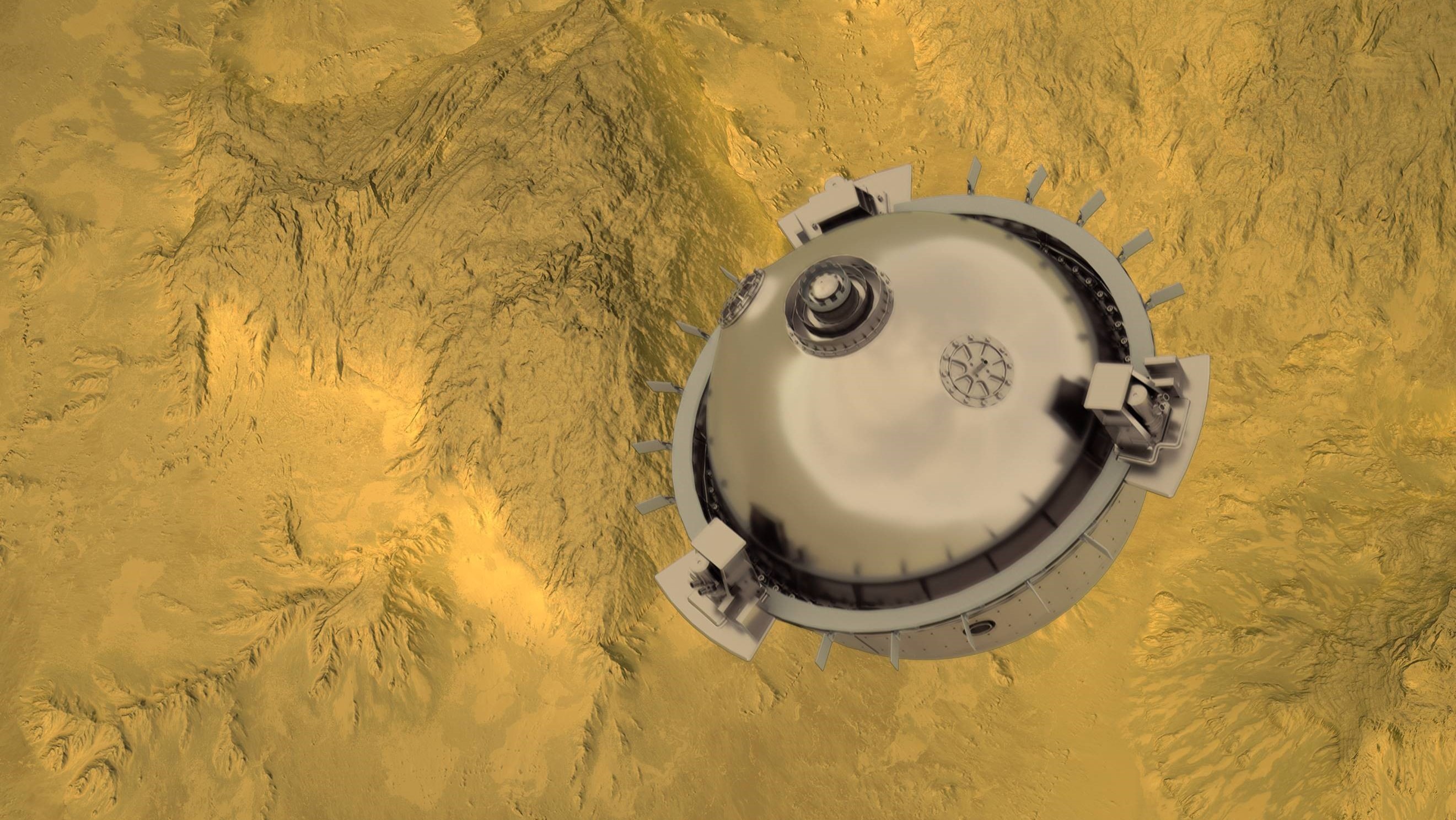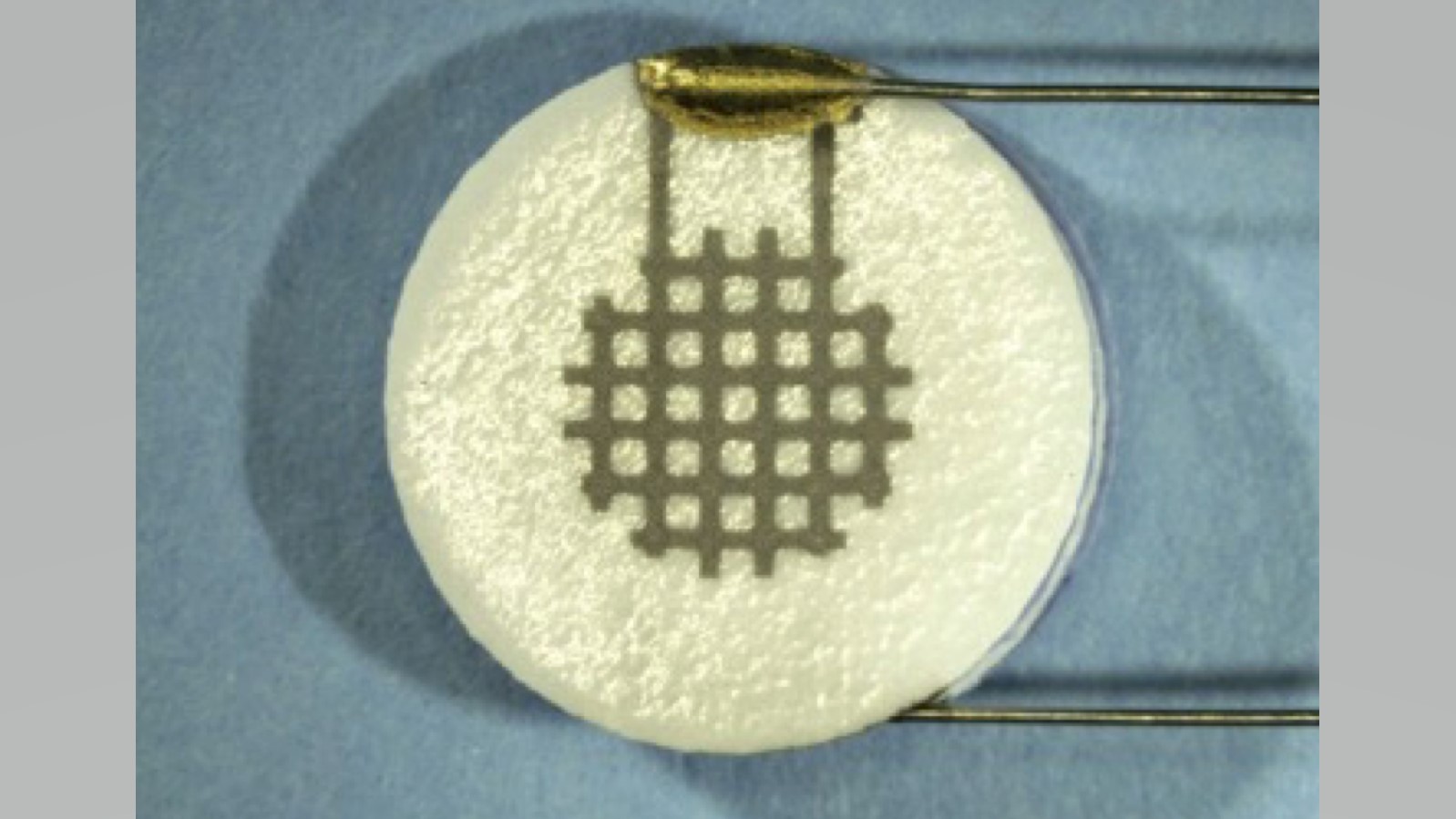A Venus-bound mission from NASA will carry a tiny sensor built by students to the planet's hellish surface

NASA's DAVINCI mission to Venus will carry a dime-sized, student-built sensor to study the planet's near-surface environment.
The DAVINCI (Deep Atmosphere Venus Investigation of Noble gasses, Chemistry, and Imaging) mission, which is slated to launch in 2029, aims to investigate Venus' atmosphere-climate system and shed new light on the scorching planet's potentially habitable past. It is the first Venus mission that will use both spacecraft flybys and a descent probe.
The miniature sensor, called the Venus Oxygen Fugacity (VfOx) instrument, will be mounted on the outside of the spacecraft's Descent Sphere, the probe that will enter Venus' atmosphere. The sensor will be designed, built, tested and operated by students as a part of the mission's Student Collaboration Experiment, according to a statement from NASA.
Related: New wave of missions to reignite Venus exploration
The spacecraft will perform two flybys of Venus before its probe plunges through the planet's dense atmosphere about two years after launch. The probe is expected to take measurements of clouds and ultraviolet absorption on the Venusian dayside, along with measurements of heat emanating from the planet's surface on the nightside. The probe will also ingest and analyze gasses in the planet's atmosphere while capturing images of its descent to an area known as Alpha Regio, which is composed largely of rugged, mountainous terrain called tessera.
As the probe nears Venus' surface, it will measure the partial pressure of oxygen, known as oxygen fugacity, in the planet's deep atmosphere. Scientists can then compare this information with measurements of oxygen captured in rocks on Venus' surface to better understand the planet's mountainous terrain, which has never been visited by a spacecraft, according to the statement.
"By analyzing these ground-breaking VfOx measurements, scientists will, for the first time, seek to identify what minerals are most stable at the surface of Venus in the highlands and link the formation of rocks to their recent modification histories," NASA officials said in the statement. "VfOx will measure the amount of oxygen present near the surface of Venus as a 'fingerprint' of the rock-atmosphere reactions that are going on today."
Breaking space news, the latest updates on rocket launches, skywatching events and more!
Measuring almost 0.4 inch (less than 1 centimeter) in diameter, the VfOx sensor will be built out of ceramic, allowing it to survive Venus' hellish atmosphere. Ceramic is resistant to temperature changes, meaning the probe will be able to operate as it nears the planet's surface, where temperatures are hot enough to melt lead.
As part of the DAVINCI mission, the Student Collaboration Experiment aims to educate and train undergraduates and graduates in planetary science and engineering skills through real-world applications. The students will analyze the data VfOx returns from Venus and work with the DAVINCI science team on other activities related to the mission.
"We are trying to engage and encourage the next generation of planetary scientists and engineers," Noam Izenberg, principal research staff at the Johns Hopkins University Applied Physics Laboratory in Laurel, Maryland and student collaboration lead for VfOx on DAVINCI, said in the statement. "We want to attract more students from all backgrounds, including the less-advantaged and the less-represented."
Follow Samantha Mathewson @Sam_Ashley13. Follow us on Twitter @Spacedotcom and on Facebook.

Samantha Mathewson joined Space.com as an intern in the summer of 2016. She received a B.A. in Journalism and Environmental Science at the University of New Haven, in Connecticut. Previously, her work has been published in Nature World News. When not writing or reading about science, Samantha enjoys traveling to new places and taking photos! You can follow her on Twitter @Sam_Ashley13.

